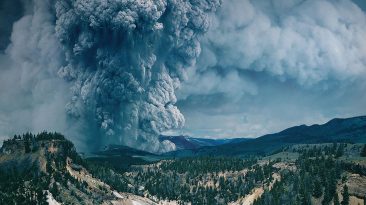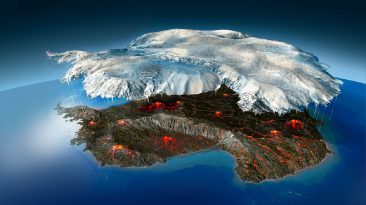Almost 75% of the world’s tornadoes occur in the United States, which means that about 1,300 tornadoes hit the U.S. every year. Most of these tornadoes occur between April and June in an area known as Tornado Alley.
Tornado Alley is an area in the central U.S., where the four ingredients needed to form a tornado frequently come together, moisture, instability, lift, and wind shear. Unfortunately, you too have been swept up in this rambunctious gathering. And now you’re wondering how long this party will last, and whether you’re going to come out of it alive.
There are several reports of people who were picked up by tornadoes, and dropped a couple of hundred feet away without a scratch. But don’t get your hopes up.
According to one estimate, 91% of the people who encounter a tornado are either killed or severely injured. But suppose you like to live dangerously, and choose to ignore the risks. So you opt to go on a nice bike ride in, let’s say, Kansas. Unfortunately, it’s not the nicest day for a ride. A supercell is brewing.
Supercells are the most powerful type of thunderstorm. Supercells are unique because they contain mesocyclones, which are large, rotating updrafts that can become a tornado in the right conditions. When warm air and cold air collide, as they tend to do in the central United States, the resulting atmospheric instability creates rolling columns of wind known as wind shear.
With its strong updraft, the mesocyclone in a supercell lifts the rolling column of wind into a vertical position, and soon a tornado is born. And if you’re anywhere nearby, let’s just say your chances of survival are up in the air.
If you get sucked into a tornado, you’ll be hurled and spun around at the speed of the wind. In extreme cases, the wind speed in a tornado can reach higher than 480 km/h (300 mph). And remember, it’s not just you in there. Depending on the strength and intensity of the tornado, glass, wood, bricks, and even houses and cars could be inside there.
But being hit by a flying cow wouldn’t be your only concern. You’d also have to contend with freezing temperatures and lack of oxygen. With the wind constantly being funnelled into the center of the vortex, the temperature inside a tornado would be 15-20°C (27-36°F) colder than it would be outside.
Researchers think that the air density would be about 20% lower than that found at high altitudes, which would be similar to breathing at an altitude of 8,000 m. At that height, you’d need assistance to breathe, so if you were stuck in the tornado for longer than three minutes, you’d probably pass out from lack of oxygen.
But if you spend your time inside the tornado begging for it to end, keep in mind that when the tornado does stop, you’ll be dropped from whatever height you reached while you were inside. Luckily, Kansas is known as the Wheat State, so maybe there’ll be a soft bale of hay nearby to break your fall. But I’d worry about surviving the inside of the tornado first. Or, maybe you can just avoid this situation altogether.
When you hear that tornado siren go off, get to a safe place as soon as possible. If you don’t have an underground shelter, your basement is the next best thing, since the foundation of your house is stronger and less likely to be ripped up by a tornado. But while these measures might protect you from getting sucked into a tornado, sometimes there’s nothing you can do to prevent getting swept off your feet. I’m not talking about love, I’m talking about a world without gravity.



























